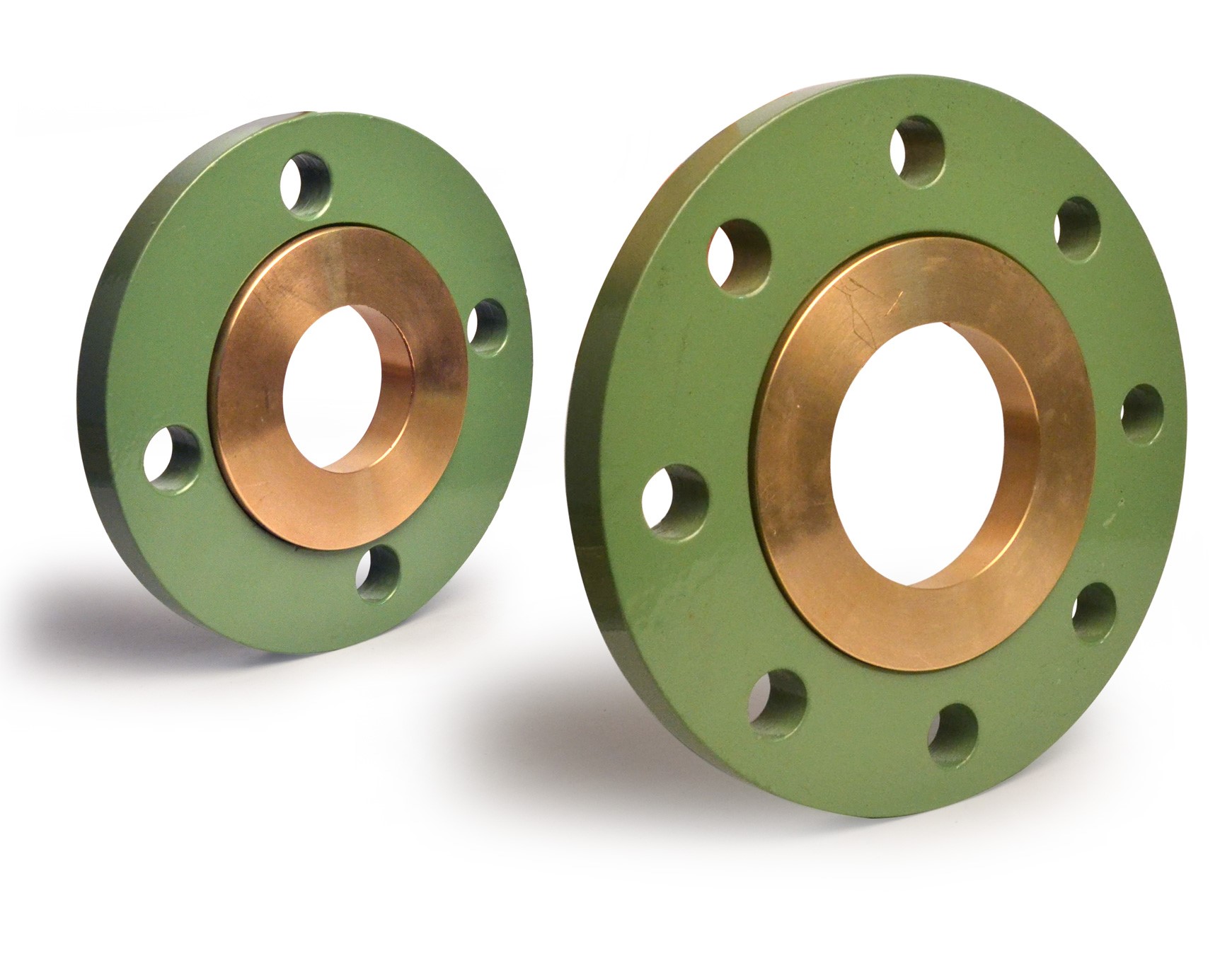

BIMETAL FLANGE


In the world of industrial engineering, bimetal flanges are becoming increasingly popular and for good reason. These types of flanges are made from two different metals, typically steel and copper or aluminum, and offer a host of benefits over traditional flanges. They provide superior corrosion resistance, increased durability, and better thermal conductivity, making them ideal for use in harsh industrial environments. Additionally, bimetal flanges can be customized to fit specific application requirements and are compatible with a variety of piping systems.
We will delve into the advantages of bimetal flanges in industrial settings and explore why they are quickly becoming the preferred choice for engineers and manufacturers alike. So, whether you're an engineer or simply interested in learning more about bimetal flanges, read on to discover the many benefits of using them in your industrial applications.
Bi-Metallic Brazing Flanges are manufactured by Tesco Steel & Engineering in different shapes and sizes with custom specifications and client requirements. We manufacture these Bi-Metallic Brazing flanges according to ASTM, ASME, ANSI, EN, AFNOR, AWWA, GOST, DIN, AS, BS, MSS, SA, UNI, JIS and other international standards. Our factory is equipped with state of the art machinery for production of Bi-Metallic Brazing flanges. We cater to the gigantic global demand of our customers spread across 6 continents around 96 countries.
| flanges are available in the following specifications: | |
|---|---|
| Size | 1/2"NB to 56"NB |
| Class | 150#, 300#, 3000#, 6000#, 9000# |
| Sch (Schedule) | XS, XXS, STD & Schedule 20, 40, 80, 160 |
| Pressure Ratings | PN 1 - PN 400 |
| (Blanking) Bi-Metallic Brazing Flange Dimensions |



BIMETAL FLANGE
Countries we export to: (Blanking) Bi-Metallic Brazing Flanges Manufacturers / Suppliers / Stockist in Kuwait, UAE, Germany, Saudi Arabia, West Africa, Iraq, Congo, Mexico, Bahrain, Canada, Philippines, Thailand, Kenya, Oman, Malaysia, Turkey, Qatar, Sudan, Netherlands, Oman, Nigeria, Lithuania, Gabon, Russia, Vietnam, Angola, Bolivia, Indonesia, UK, Yemen, Italy, United States, Venezuela, Spain, Iran, Estonia, Kazakhstan, Algeria, Jordan, Ecuador, Portugal, Colombia, Libya, Chile, Peru, Iran, South Africa, Bangkok, Namibia, Jeddah, Afghanistan, Israel, Zambia, Macau, Morocco, Denmark, Taiwan, Norway, Belarus, North Macedonia, Lebanon, Sri Lanka, Bhutan, Bulgaria, Albania, Ukraine, Belgium, Finland, Slovokia, Tibet, Romania, France, Brazil, Trinidad & Tobago, Fiji, Tunisia, Gambia, Mexico, Hungary, Zimbabwe, Mongolia, Ghana, Egypt, Kazakhstan, Czech Republic, Azerbaijan, Poland, Greece, Costa Rica, Kosovo, New Zealand, Croatia, Puerto Rico, Tanzania, Somalia.
Major Exporting Areas: (Blanking) Bi-Metallic Brazing flanges Manufacturers / Suppliers / Stockist in Moscow, Port-Of-Spain, Seoul, Montreal, Dubai, Kuala Lumpur, Aberdeen, Tehran, Bogota, Petaling Jaya, Melbourne, Abu Dhabi, Courbevoie, Edmonton, Ho Chi Minh City, Bangkok, Toronto, Muscat, Milan, Busan, Mexico City, Perth, La Victoria, Santiago, Rio de Janeiro, London, Karachi, Los Angeles, Manama, Geoje-si, Atyrau, Sydney, Riyadh, New York, Jeddah, Houston, Granada, Jakarta, Brisbane, Algiers, Kuwait City, Dubai, Hanoi, Doha, Al Jubail, Chiyoda, Cairo, Gimhae-si, Caracas, Lagos, Al Khobar, Madrid, Singapore, Calgary, Colombo, Ulsan, Istanbul, Ahvaz, Dammam, Dallas, Texas, Ankara, Sharjah, Vung Tau, Angola, Benin, Burundi, Botswana, Burkina Faso, Cameroon, Douala, Central African Republic, Republic of Congo, Democratic Republic of Congo, Côte d'Ivoire, Djibouti, Eritrea, Ethiopia, Equatorial Guinea, Gabon, Guinea, Kenya, Liberia,Malawi, Mali, Mauritania, Mauritius, Casablanca-Settat, Tanger-Tetouan-Al Hoceima, Fès-Meknès, Marrakesh-Safi, Oriental, Béni Mellal-Khénifra, Souss-Massa, Laâyoune-Sakia El Hamra, Rabat-Salé-Kénitra region, Mozambique, Temara, Niger, Rwanda, Senegal, Sierra Leone, Sudan, Tanzania, Togo, Uganda, Bangkok, Bangchan, Khlong Sam Wa, Gemopolis, Lard Krabang, Pathumthani, Bangkadi, Navanakorn, Samut Prakarn, Bangplee, Bangpoo, Saraburi, Nongkhae, SIL I/Land, Chachoengsao, 304 I/P, Gateway City, Wellgrow, Rayong, Amata City, Eastern Seaboard, Hemaraj Eastern Seaboard, Rojana, Soam Eastern, Chonburi, Amata Nakorn, Hemaraj Chonburi, Pinthong, Ayutthaya, Bangpa-in, Saha Ratna Nakorn, Nakornratchasima, Kabinburi, Prachinburi, HCMC, Tan Thuan Export Processing Zone, Bien Hoa, Dong Nai Province, Amata City Bien Hoa Industrial Park, Long Binh Techno Park, Binh Duong Province, Vietnam Singapore Industrial Park, My Phuoc Industrial Park, Ho Nai Industrial Zone, Bau Xeo Industrial Park, Long Thanh Industrial Zone, Long Duc Industrial Park, Duc Hao I, Tan Huong, Long Jiang, Tra Noc I/II, Hung Phu I, Hiep Phuoc Industrial Park, Phuoc Dong Industrial Park, Dinh Vu – Cat Hai Economic Zone.